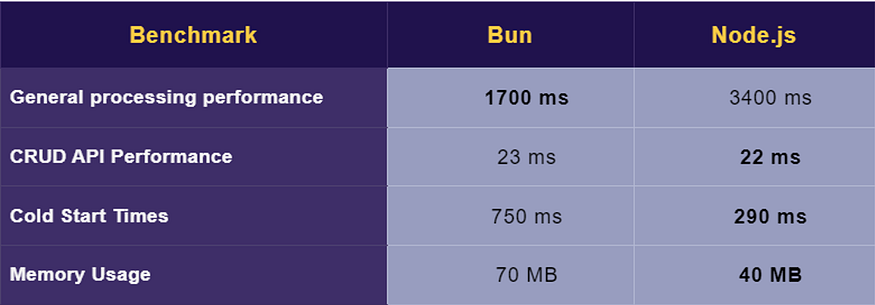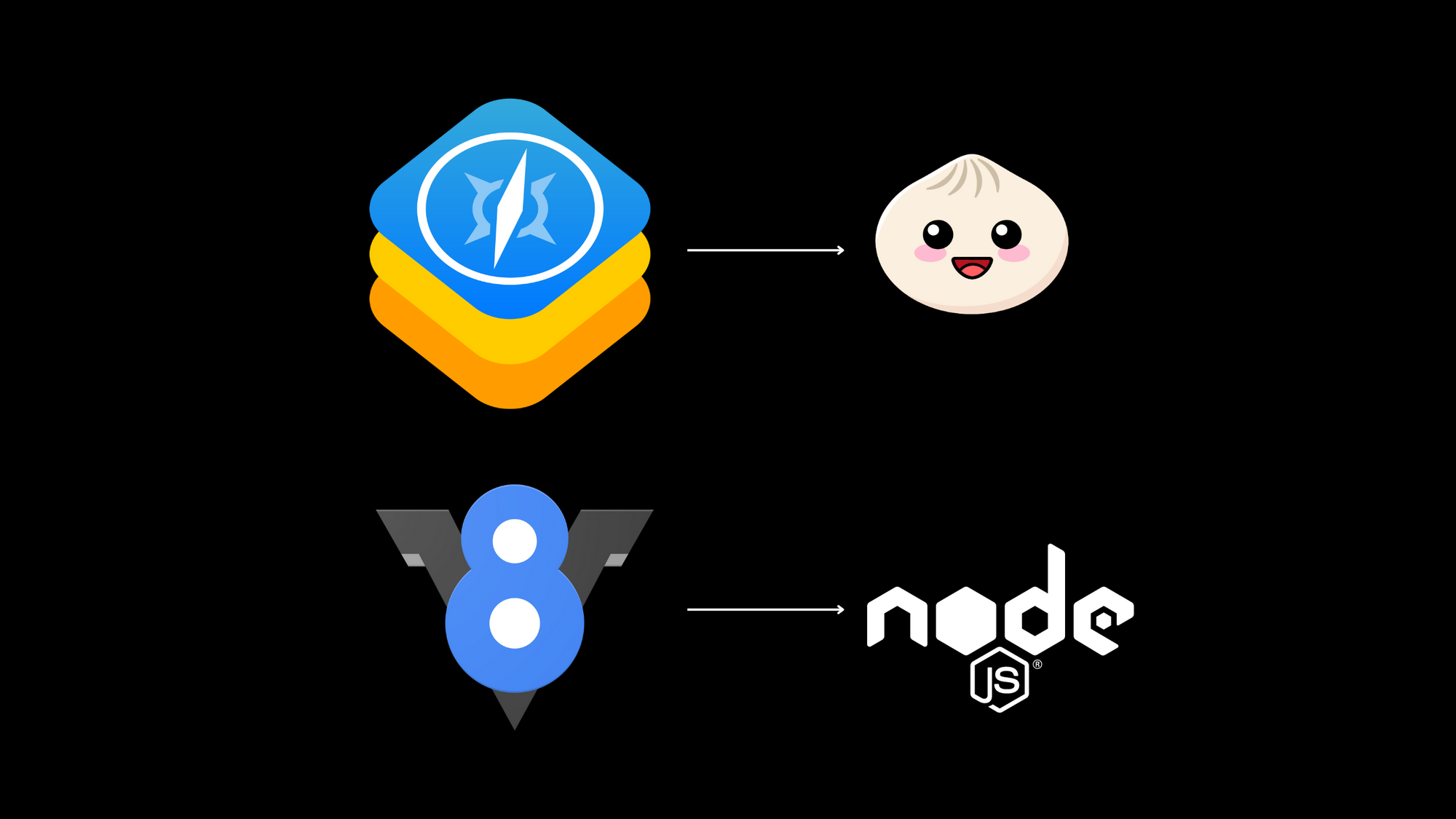In the dynamic landscape of web development, choosing the right framework is pivotal to the success of your projects. With the emergence of Bun as a new contender alongside the well-established Node.js, developers are faced with a critical decision. This article aims to provide an in-depth analysis of Node.js and Bun, focusing on performance, scalability, community support, and more, to assist you in making an informed choice.
Introduction to Node.js and Bun
Node.js, the veteran in the realm of JavaScript runtimes, has garnered widespread adoption due to its event-driven architecture and the powerful V8 engine. On the other hand, Bun, introduced in September 2023, brings fresh perspectives with its emphasis on performance and developer experience.
Node.js:
Node.js is a JavaScript runtime built on a single-threaded, event-driven architecture. It efficiently handles concurrent requests, particularly in I/O-bound operations. Leveraging the V8 engine, Node.js ensures exceptional performance, albeit with potential trade-offs in startup times due to V8’s complexity. Its ecosystem, centered around npm, offers an extensive collection of packages for various development needs.
Bun:
Bun takes a different approach with its multi-threaded design, leveraging multiple threads to tackle CPU-intensive tasks effectively. Powered by JavaScriptCore (JSC), Bun prioritizes rapid startup times and efficient CPU usage, compensating for potential differences in raw speed compared to V8. While Bun’s package ecosystem is evolving, it currently lags behind npm in terms of breadth and depth.
let's see In what sense bun js is ahead according to https://bun.sh/

Performance and Scalability Comparison
Node.js:
Design: Node.js adopts a single-threaded, event-driven model, excelling in handling concurrent requests efficiently, especially in I/O-bound operations.
Foundation: Leveraging the V8 engine, Node.js boasts exceptional performance, although startup times may be slower due to V8’s complexity.
Package Ecosystem: Node.js enjoys a mature ecosystem with npm, offering an extensive collection of packages catering to diverse development needs.
Real-Life Example: Netflix relies heavily on Node.js for its backend services. By leveraging Node.js's event-driven architecture, Netflix achieves high scalability and responsiveness, handling millions of concurrent connections efficiently.
Bun:
Design: Bun takes a multi-threaded approach, utilizing multiple threads to tackle CPU-intensive tasks, thereby optimizing performance for certain workloads.
Foundation: Employing JavaScriptCore (JSC), Bun prioritizes fast startup times and efficient CPU usage, compensating for potential differences in raw speed compared to V8.
Package Ecosystem: While Bun’s package ecosystem is growing, it currently trails behind npm in terms of breadth and depth.
Real-Life Example: A startup specializing in real-time analytics for financial data chooses Bun for its platform. Bun's multi-threaded architecture allows the startup to process large volumes of data swiftly, delivering real-time insights to clients.
Community Support and Ecosystem
Node.js:
Size and Maturity: With a massive and well-established community, Node.js offers abundant resources, tutorials, forums, and extensive documentation, facilitating ease of learning and troubleshooting.
Learning Resources: The plethora of learning materials available for Node.js simplifies the onboarding process for beginners and supports continuous skill development.
Contribution: Node.js benefits from a vibrant contribution ecosystem, with a constant influx of libraries, tools, and frameworks from the community.
Real-Life Example: PayPal utilizes Node.js extensively in its platform. The vast Node.js community provides PayPal with ample resources and support, enabling rapid development and innovation in their services.
Bun:
Early Days: As a newcomer, Bun’s community is smaller but rapidly growing, with enthusiastic developers actively contributing to its development and resource creation.
Limited Resources: Despite the current scarcity of tutorials and documentation, Bun’s community fosters direct interaction with core developers, offering opportunities for quick support and potential influence on the platform’s evolution.
Real-Life Example: A gaming company opts for Bun to power its multiplayer game servers. Despite Bun's nascent community, the close interaction with core developers allows the gaming company to address performance issues swiftly, ensuring a seamless gaming experience for players.
Pros and Cons of Node.js and Bun
Node.js:
Advantages: Event-driven architecture, robust ecosystem with npm, extensive community support.
Drawbacks: Potential slower startup times, learning curve for some developers.
Bun:
Advantages: Multi-threaded architecture, fast startup times, potential for efficient CPU usage.
Drawbacks: Limited package ecosystem, fewer readily available learning resources.

Conclusion: Making the Right Choice
While Node.js maintains its stronghold in the web development landscape, Bun emerges as a promising challenger, particularly for projects prioritizing super-fast startup times and CPU-intensive tasks. However, Node.js continues to offer unmatched advantages with its mature ecosystem and extensive community support.
In essence, your choice between Node.js and Bun should be guided by the specific requirements of your project and your team’s expertise. Conduct thorough evaluations, considering factors such as performance benchmarks, community support, and ecosystem maturity, to ensure the optimal framework selection for your web development endeavors.

